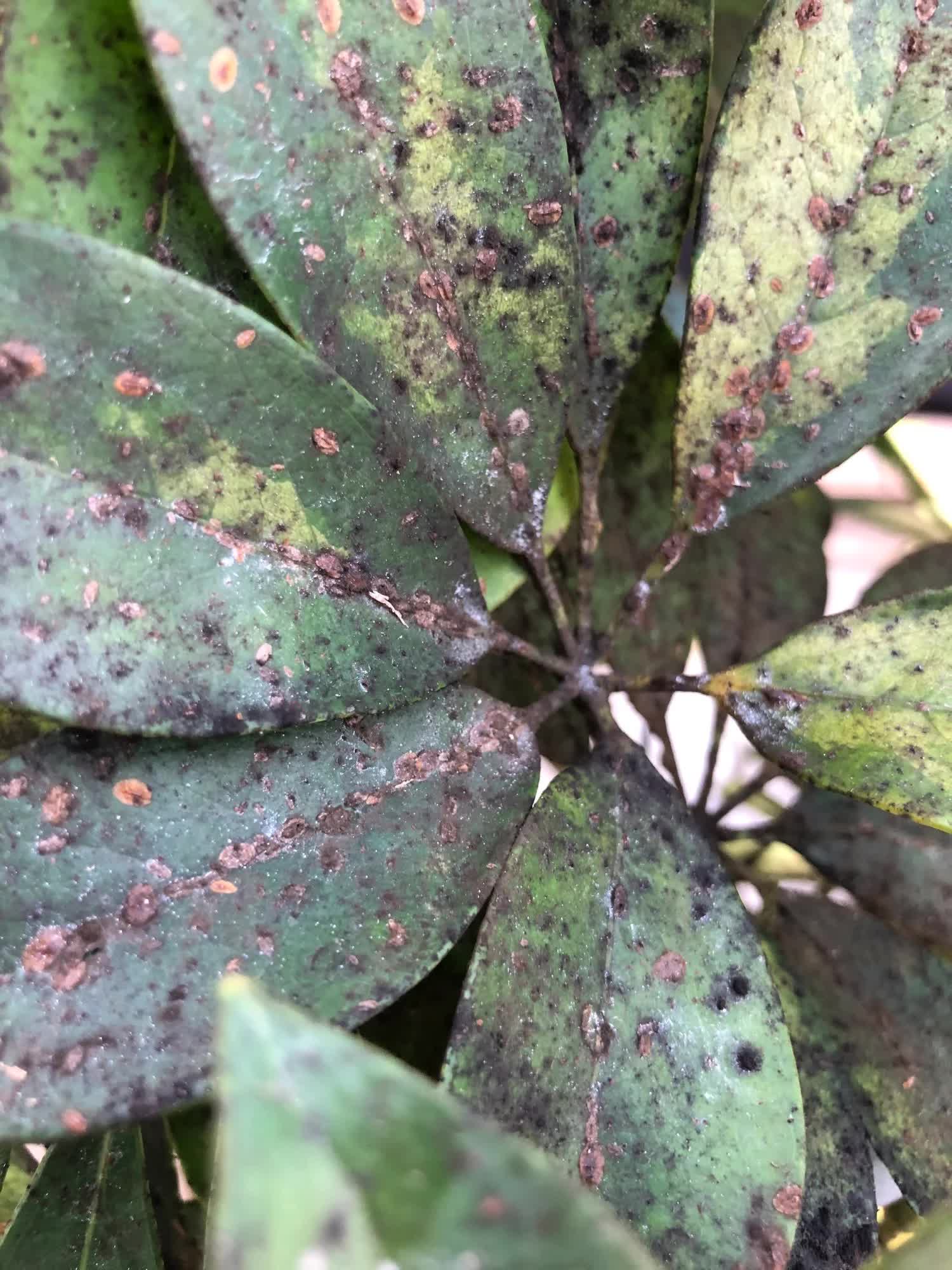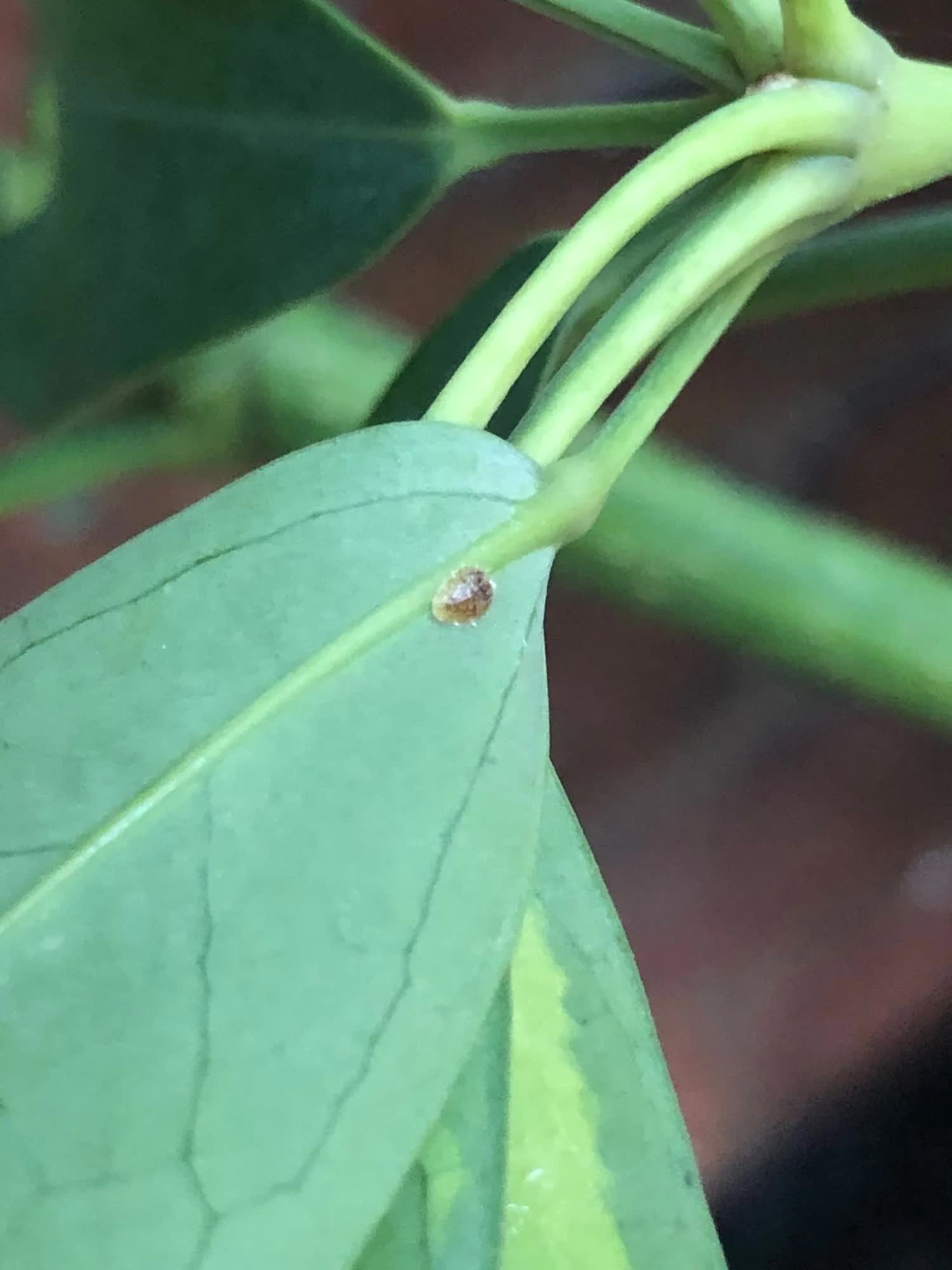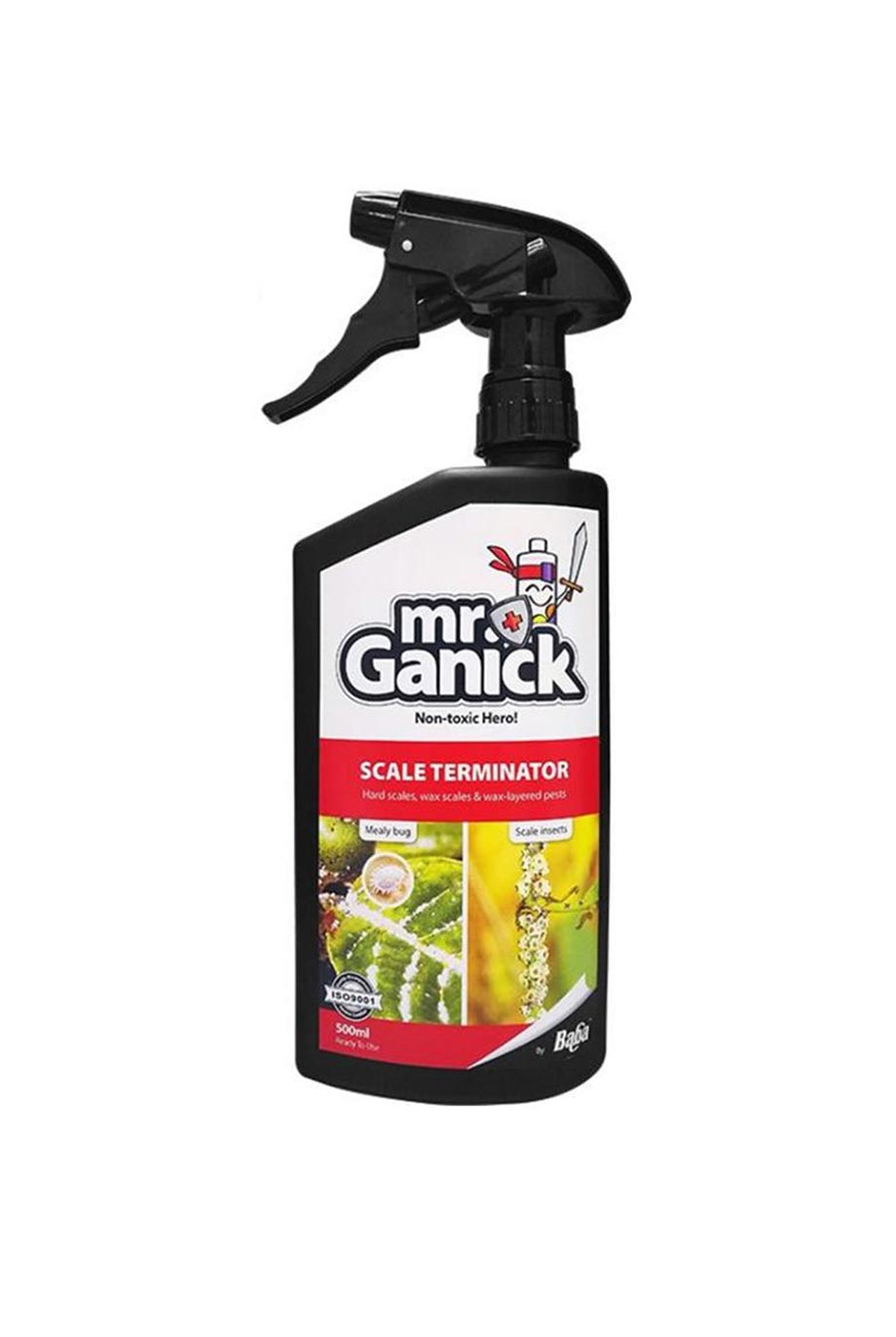Top Tips & Info
Eradication Difficulty - Moderate
Life Cycle - Up to a year.
The female can lay up to fifteen eggs a week - fifty in total.
Scale can affect all areas above the soil line, including the leaves, cubbyholes and flowers.
Remove and crush all of the visible bugs using your fingernails.
Prune off the severely affected growths and any flowers that house the infestation.
Take the plant outside and perform a gentle hose-down. Aim at all of the cubbyholes for complete obliteration and then replace the top inch of the soil to remove any live bugs that have fallen.
Allow the plant to dry off before applying either an organic or chemical-based pesticide.
Repeat the wiping, hosing-down and pesticide steps every 7 - 14 days for the next month.
Quarantine the affected plants until there are no signs of an infestation for over a month.
________________________________
Symptoms
Small ovular or circular shells will begin to populate stems and on the underside of leaves. Although they can vary in colour, most varieties will sport warm colours that range from brown to yellow. Unfortunately, they'll also secrete a honeydew-like substance that makes the lower leaves sticky or shiny, as seen on the image below. Unlike other pests, they'll easily blend in with the foliage, so regularly checking for Scale is a good idea to prevent a further outbreak.
.jpg)
A shiny sticky substance will develop on the foliage below the Scale's infestation.
Affected Plant & Parts
Scale will infest any surfaces that are strongly housed onto the plant; for instance the stems, petioles and both sides of the leaves. You'll also notice a shiny, sticky texture developing on the top-sides of the lower leaves.
Plants - Bananas, Cacti, Citrus, Crotons, Dracaena or Dragon Trees, Ficus, Money or Jade Plants, Pachira, Palms, Polyscias (Aralia), Sago or Cycads, Sansevieria, Umbrella Trees & Yucca.

A heavily infested Scale accompanied by sooty mould which is a harmless fungi that thrives on pest-excretion.
Actions needed
N. B - Most Scale will hatch their eggs in June, so spraying the nymphs during this time is best to keep future populations down. There are multiple methods and remedies in which you can use; neem oil, rubbing alcohol and manual fingernail-prying. Although pesticides like neem oil or alcohol will significantly keep the numbers down, you may have some difficulty, to begin with as mature adults will be protected by their broad, armour-like shells.
1. Using your fingernails to pry-off each bug is the safest and most efficient way to remove them. Due to the easy chance of puncturing the leaves with a sharp tool, avoid anything other than your hands.
2. Once the visible infestations are removed, take it outside and gently wash the entire plant using an outdoor hose. It's important to spray it in at least three different angles to ensure all sections of the plant has been administered. Empathise the cubbyholes, for instance, between the stem and its petioles and undersides the leaf. If the nighttime temperature is above 15℃ (59℉), keep it outside so that natural predators, (like ladybirds & green lacewings) can have a go at the bugs as well.
3. An optional tip is to replace the top 2cm (1 inch) of the soil. Not only will this improve the overall soil conditions, but it'll also remove any alive fallen bugs that have landed in it. This method can be taken once the plant has become fully dry after the first wash, and should only be performed once.
4. Consider whether to use an organic or chemical-based pesticide. The first option, of course, will avoid the use of harsh chemicals but will generally work slower than the latter option.
5. Keep the affected plant away from others in a quarantined room until the symptoms have subsided for at least four weeks. Always be wary of a relapse, and keep an eye out for possible outbreaks for several months after the last sighting.
N. B. - Although you should perform the wiping and hosing-down process BEFORE each pesticide application, you can wash the foliage at any given time to keep the infestation under control.

The midrib of a leaf is one of the most common areas to find an attack.
Organic Pesticides
Insecticidal, or Horticultural Soap is the second most used organic pesticides on the market, and there are three versions to consider. The first way is by purchasing an RTU (ready-to-use) spray bottle, which can be immediately used on the plants. Although most garden centres will stock this, it's far more economical to purchase the second option - concentrated bottles. This method comes with pro's and con's but is far cheaper to use if you have multiple infestations. It's self-explanatory and highly beneficial for the outbreak as long as you use the correct levels of dilution - the only downside is its availability in local centres. It's best to buy this option online as there are many different companies to choose from, with some being cheaper than others. The final and most affordable way is by making it yourself;
There are three ingredients in creating your own insecticidal soap - a vegetable, tree or nut-based oil, non-fragrant dishwashing soap and tap water. Most oils are acceptable, with the most successful being vegetable, sunflower, neem and olive oil. Add two parts oil, one part dishwashing soap and eight parts water to create the dilution. Although it's best to fresh bottled water, tap water that has been allowed to sit for 24hrs is also fine. Spray the dilution wholly around the plant, empathising both the infestations and the potential-hit areas. This method must be performed weekly over a month or two, along with regular pest inspections - as soon as you see a bug, crush it.
Neem Oil - This is by far the most effective and popular around the world. Not only will many online stores sell it, but it'll get to work after the first application. Dilute the liquid, (to the manufacturer's recommended strength) with water and/or dish soap and spray thoroughly onto the foliage and its cubbyholes. Any flowers must be removed instead of misted, due to the heightened chance of another infestation.
Natural Predators - The last non-organic method is by acquiring adult ladybirds or green lacewings. Although buying insects may be deemed as cruel or inappropriate, it's a natural, and least time-consuming way to remove the pests. Many online stores will sell the insects, all at varying prices and quantities. Once you've obtained the predators, release them in different sections of the plant, favouring the most infested areas first. They'll make their way around your plant, digesting both the eggs and the adults, leaving you with a potentially pest-free plant. Keep the insects and plant in an enclosed transparent box to increase the amount of digestions. Unfortunately, this method can take several days to work and could even be unsuccessful, which is why other methods are favoured.

Ladybirds and Green Lacewings are an excellent choice for natural pest reduction.

Plantshop.me recommended concentrated pesticide. Click here to buy.







